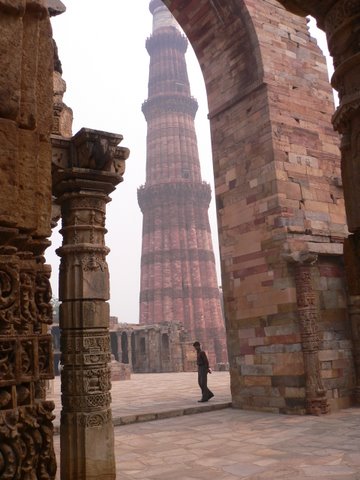Part 2 of passage to India - New Delhi transforming from government to IT

[This is an account of my first trip to India, traveling as a guest of Tibco Software, an SVW sponsor. Vivek Ranadive, the CEO of Tibco is launching his business IT strategy book "The Power to Predict" in India, and he invited me to come along as he meets with politicians and some of India's top business and technology leaders. Part 1 is here.]
New Delhi is a government city, at least for now. Broad boulevards and grand government buildings seem to be everywhere. And civil servants sit outside in circles having lunch on the expansive lawns.It is a city of 14m people but I have no idea where they live, clearly not in the British colonial palaces in this part of the city where I am staying as a guest of Tibco.

Delhi and Rome share the distinction of being the only two cities that have been continually inhabited for more than 2,000 years.
Delhi is moving away from its dominance by government agencies and is building a state-of-art IT business park in its suburbs. Already, there are many US IT companies represented in India's capital city and more are expected. Bangalore, the well known Indian hi-tech center is about a two hour flight south of Delhi, closer to Mumbai (Bombay).
In the evening we head out to the Sheraton hotel about 15 minutes away where Vivek Ranadive, the CEO of Tibco is due to give a keynote speech at the Dataquest India IT awards reception and dinner.
The Sheraton is teaming with men in suits as we walk along the corridor and into a cavernous, dark room and sit and watch the stage. Various awards are given for achievements in IT.
Mr Ranadive gets up and gives his speech. He talks about how he started life as a hardware engineer but got fed up with software continually lagging hardware. He spoke about how he started his first software company, making a presentation to Goldman Sachs and winning his first customer.
He explains how IT has been database driven for many years and how this led to an "architecture of extortion" because it requires expensive consultants and processes to manage. And now the future of IT needs to be services driven, through a services oriented architecture (SOA) as a way to escape the "extortion" of the old IT order.
With SOA, corporations can move beyond real-time processing of business data and tap into historical analysis to predict strains on their IT systems, to predict which customers need services that will keep them customers. The historical data can trigger business processes in real-time. It's all part of his predictive enterprise concept that is explained in his book, "The Power to Predict."
There is lots of applause and then the rest of the awards ceremony continues. It is soon over and we skip the dinner and head back to our hotel.
Next: Part 3: Private jet to the teeming Mumbai (Bombay) as Vivek Ranadive returns to his home town, and a CIO magazine dinner with CIO's from India's largest corporations - India Inc. Part 1 is here.